CHRISTINE BUCKLEY
TWENTY-FIVE years ago I started what seems now a fairly simple investigation to find out who my parents were. Perhaps, I thought, if they were still alive 37years after my birth, I might even meet them. Little did I know that thousands of other people would be inspired by that investigation and the spin-off from it
– some to undertake similar voyages of self-discovery and others to go beyond this through counselling support and education to develop renewed selves.
In 1985 I found my birth mother and three years later I travelled to
Nigeria to meet my father. There, I told him about my life in Goldenbridge
Industrial School (at Inchicore in Dublin) and how I intended to go public about
the horrors of that place once he returned to Ireland to meet my children.
In 1992 Dad duly arrived and his old friend Gay Byrne invited both of us
to tell our story on RTÉ Radio. Many might have thought that would be the end of it, with maybe a book, possibly titled Daughter Finds Parents, which would close
with an almost fairytale ending as we could all live happily ever after. But thousands of others wanted help to undertake similar investigations and wrote
and phoned Gay Byrne and me asking for our help. Their stories demonstrated how many children, several with the collusion of the judiciary, were incarcerated in
industrial schools to undertake slave labour in order to swell the coffers of
the religious congregations.
Not alone were many deprived of any knowledge of their parents, but their sense of self-worth was corroded by inhumane treatment and neglect. “School” was a complete misnomer. While I was one of the few fortunate ones to receive a secondary education, and subsequently qualified as a nurse, most didn’t even get a decent primary school education.
These institutions have been the subject of a major and lengthy investigation by the Commission to Inquire into Child Abuse, which is to report tomorrow.
After the overwhelming response to the Gay Byrne radio interview, a senior member of the Mercy congregation apologised on the airwaves and agreed to meet me to discuss funding a counselling service for a handful of women who were with me in Goldenbridge. Alas, that promise was not realised.
It was those following years of delay, exacerbated by the denials or
dismissals by the religious and their apologists in the lay world, as well as
elements in the media, which meant that further, more telling evidence was
required.
For this reason I agreed to Louis Lentin’s invitation to participate in his 1996 TV documentary Dear Daughter . While Louis intended, as the title suggests, focusing onmy story and highlighting the fairytale ending, I persuaded him to incorporate the harrowing tales of other brave women in Goldenbridge.
This was designed to demonstrate that it wasn’t just one
person’s experience. Sadly, two of those women have since died. Yet again the scale of the response widened with many more people speaking out against the way
the Sisters of Mercy and other religious congregations treated children. They also provided evidence that the mistreatment was not confined to the Sisters of
Mercy but was perpetrated by a number of religious orders.
The Sisters of Mercy set up the Faoiseamh helpline But such was the response of religious sympathisers that RTÉ acquiesced and broadcast one of the most one-sided Prime Time programmes in its history, which included interviews with a Sister of Mercy held responsible for ill-treatment, and her sympathisers.
RTÉ refused me a right of reply in studio despite my co-operation with the producer. Such a right of reply was given to the Sisters of Mercy in our Dear Daughter programme.
Notwithstanding that, a “One Happy Day” reunion took place in the RDS
with the support of two Goldenbridge woman, Carmel McDonnell-Byrne and
Bernadette Fahy as well as wonderful volunteers from the general public. The day
was magnificent and shocking. Yet again further evidence would be necessary.
In the meantime, over those years I met politicians from the three main political parties to seek help for those who had contacted me.
My requests ranged from seeking an inquiry to finding out what went on and why in
those institutions, as well as to the provision of counselling and education for
victims of abuse.
Austin Currie, then minister for children in John Bruton’s government found excuses to avoid meetings, as has his fellow Northerner, President Mary McAleese. Perhaps it’s because of what Northern Catholics have suffered that they seem to be find it more difficult to believe what we suffered at the hands of the religious in the Republic.
In contrast, even in opposition and then when in power, former taoiseach Bertie Ahern and Micheál Martin, then minister for education. were willing to meet, listen and believe. Meanwhile, broadcaster and journalist Mary Raftery had been in contact with me and I assisted her in meeting people who were willing to be interviewed for her series States of Fear. It was supported by the book Suffer Little Children ,
written by Mary and TCD lecturer Eoin O’Sullivan. In response to that programme Ahern issued a historic apology on behalf of the State, on May 11th, 1999, which at last provided the vindication that the State, which had sought to brush us under the carpet, finally acknowledged what we suffered.
He also set up the Commission to Inquire into Child Abuse, a nationwide counselling
service, and the Residential Institutions Redress Board. Self-helpgroups such as the Aislinn Centre, Right of Place in Cork and centres in Britain were established to assist fellow survivors.
Other services soon followed. These included the National office for Victims of Abuse (Nova); the Origins Tracing Service in Barnardos, to enable people access personal details about their childhoods and to assist them in tracings parents, and siblings who were sadly often separated on committal; and the Education Finance Board. It was set up (as part of the State indemnity agreement with the religious congregations) to financially assist former inmates and their relatives in availing of educational services. Nova also set up a helpline counselling service.
In the 2004 Baltimore Fishing School report, former chair of the Commission to Inquire into Child Abuse Ms Justice Mary Laffoy, concluded “that victims accounts were credible” and described conditions at Baltimore as “so harsh and deprived by the standards of today as to verge on the unbelievable”. There are dark days ahead
as we await Mr Justice Seán Ryan’s findings tomorrow.
To promote healing, it is important to learn why abuses occurred and who was responsible. It is also anticipated that Mr JusticeRyan’s report will include recommendations for the safeguarding of children in care. But recommendations mean nothing unless they are implemented and strictly adhered to with frequent
unannounced inspections. Otherwise we could be revisiting a similar chapter of institutional child abuse in years to come.
What we find out tomorrow will indicate whether the journey for justice, undertaken by so many and for so long, has at last been successful.
Christine Buckley is director of the Aislinn education and support centre at Jervis House in Dublin
By SHAWN POGATCHNIK – 3 hours ago
DUBLIN (AP) — For decades, thousands of Irish children suffered soul-crushing lives of forced labor, beatings and molestation in spartan institutions run by Roman Catholic religious orders. Campaigners for the abused believe that a measure of justice may finally be arriving — despite the church's best efforts to keep the past a secret.
The Commission to Inquire Into Child Abuse is publishing a 2,575-page report Wednesday after a nine-year investigation repeatedly delayed by church lawsuits, missing documentation and alleged government obstruction.
Its experts have sought to produce a comprehensive portrait of sexual, physical and emotional damage inflicted on children consigned to the country's defunct network of reformatories, workhouses, orphanages and other church-run institutions from the 1930s to 1990s.
Most of the children were ordered into church care because of school truancy, petty crimes or because they were the offspring of unwed mothers. Many faced regimes of terror involving ritual beatings and intimidation. But until the investigation came along, thousands of survivors said they had nowhere safe to tell their stories — because swathes of Irish Catholic society sought to label them liars.
Some of those victims say they feel hopeful now that vindication might be at hand.
Christine Buckley, who was one of the first to break silence in the early 1990s on the church's institutional abuse of children, said the report's verdict on church and government failings should demonstrate "whether the journey for justice, undertaken by so many and for so long, has at last been successful."
She, like many campaigners, said it was critical that the truth of their brutal childhoods be placed indisputably on the public record after decades of dispute from the religious orders — principally the Christian Brothers and Sisters of Mercy nuns — that ran Ireland's 19th century-era industrial schools and other state-funded refugees for Ireland's most vulnerable children. Most closed in the 1970s.
Typically, children at such facilities stopped receiving any formal education by age 12. But they kept generating income for the religious orders through their teens with their mandatory, unpaid labor on farms, in laundries and as domestic cleaners.
In Buckley's case, she was consigned to a Dublin orphanage in the late 1950s because she was the child of a single Irish mother and Nigerian father; children born out of wedlock typically were placed for adoption or into state care. All the girls at her former Sisters of Mercy-run home, Goldenbridge, were expected to manufacture 60 rosary necklaces a day or suffer humiliation or beatings.
Officials of the Sisters of Mercy, Christian Brothers and more than a dozen other orders implicated in sexual, physical and emotional abuse of children all testified to the commission. None was willing to comment this week in advance of the report's unveiling.
During the commission's investigations, oral evidence was collected from more than 1,000 people chiefly in their 50s to 70s — several hundred of whom traveled back to Ireland from as far away as the United States and Australia — who described childhoods of terror and intimidation.
The Christian Brothers delayed the investigation for more than a year with a lawsuit that successfully defended their members' right to anonymity in all references in the report — even in cases where individual Christian Brothers have already been convicted of sexual and physical attacks on children.
The Catholic Church's practice of protecting the sexual predators in their parishes and schools, rather than the children who suffered at their hands, has fanned several waves of outrage in once-devout Ireland starting in the mid-1990s.
The damage done to the church's reputation here has exceeded, in scope and political impact, even what happened in the United States, which suffered its own wave of abuse-coverup scandals in the past decade.
Ireland's first major pedophile-priest scandal, in 1994, triggered the collapse of a government. In 1999 former Prime Minister Bertie Ahern issued an apology for the state's failure over decades to defend children's rights in church-run facilities.
Ahern established both the fact-finding commission and a panel that has already paid out damages averaging nearly euro65,000 ($90,000) each to 12,000 abuse victims. The taxpayer, not the church, has footed most of that bill.
"The depth and duration of the abuse endured by our children in these institutions beggars belief," said Maeve Lewis, executive director of an abuse-victims support group called One in Four.
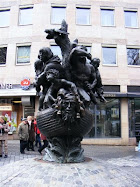
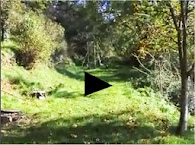
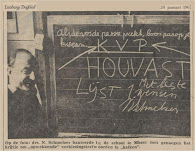

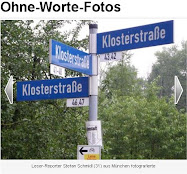
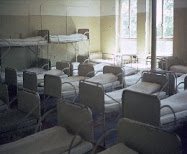






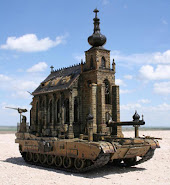
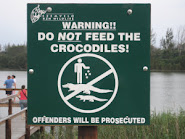


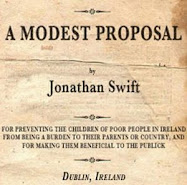


Geen opmerkingen:
Een reactie posten